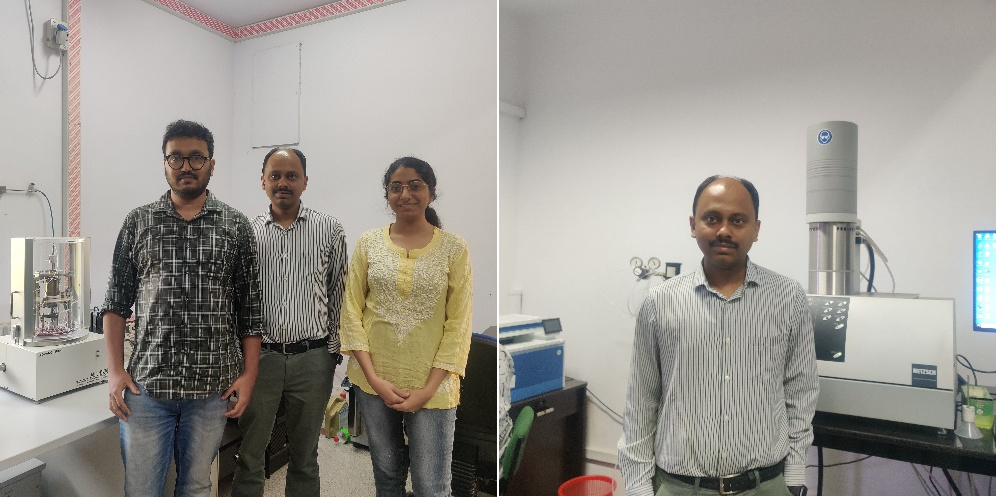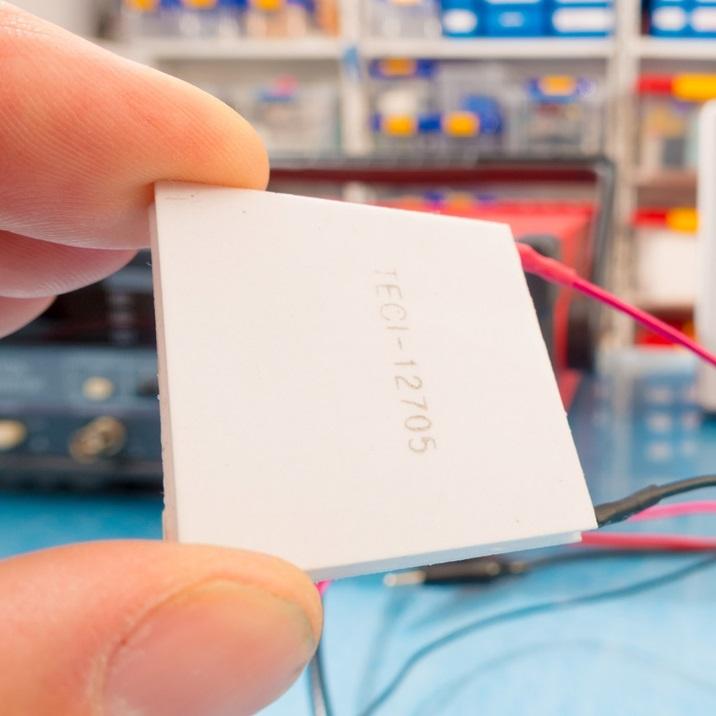A newly synthesised material that exhibits the properties of both glass and metal can efficiently convert waste heat to electricity and help improve energy efficiency and sustainability.
The scientific community is exploring sustainable and environmentally acceptable energy alternatives in response to the pressing problems presented by the depletion of non-renewable fossil fuels. Thermoelectric (TE) materials present a promising avenue for changing the global energy landscape because of their capacity to transfer waste heat into useful electricity. However, to maximise a material's energy conversion efficiency and achieve high TE performance, careful optimization of both thermal and electrical transport characteristics is required.
In a recent groundbreaking research paper, Professor Kanishka Biswas from New Chemistry Unit at Jawaharlal Nehru Centre for Advanced Scientific Research (JNCASR) Bengaluru (an autonomous institution under the Department of Science & Technology, Govt. of India) and his research team has presented a material that exhibits metal like electrical conductivity but glass like thermal conductivity which has never been reported earlier. This study, published in Advanced Materials, focuses on synthesizing a crystalline material named ytterbium (Yb) doped AgSbTe2, demonstrating unique characteristics in heat and electron transport.
The compound's name, Yb doped AgSbTe2, refers to the crucial doping of Yb, an isovalent dopant, into the AgSbTe2 compound. This doping process ensures an optimal concentration of charge carriers, preventing disruptions in electron transport.
The material is designed to act as a glass in terms of heat transport, effectively blocking heat waves, while simultaneously behaving like a metal when it comes to the conduction of electrons or charge carriers. This dual functionality opens possibilities for energy efficiency, particularly in the field of thermoelectric energy conversion. The research team achieved this feat by introducing embedded intrinsic nanostructures within the compound. These nanostructures, existing in dimensions on a nanoscale, proved to be exceptional heat blockers, selectively allowing the passage of electron waves.
To elaborate on the significance of this discovery, Prof. Biswas drew an analogy with everyday metals like copper. “While metals such as copper are excellent conductors of both electricity and heat, the newly synthesized material defies this norm by exhibiting metal-like conductivity for electricity but glass-like behaviour for heat, which is a rare and fascinating result.”
The implications of this research extend into the realm of thermoelectric energy conversion, where waste heat from various sources, such as industrial processes in power plants, households and vehicle exhausts, can be harnessed and converted into electricity. This breakthrough has the potential to significantly improve energy efficiency and sustainability.
They have made a proof-of-concept type two leg device with the material with efficiency ~9%. However, the current challenge remains in scaling up the device for practical applications. Prof. Biswas says, “The semiconductor industry plays a crucial role in this process, and we need a robust semiconductor industry, a sort of semiconductor revolution, in India to drive the mass production of devices based on this revolutionary material. Industry support is crucial to translate the fundamental science research into practical application.”
Looking ahead, Prof. Biswas and his team envision further advancements in the field, aiming to create materials with even higher thermoelectric efficiency. Additionally, understanding the chemical bonding and inner structures of materials remains a key focus for future research, with ongoing collaboration with synchrotron facilities for in-depth analysis. The potential applications in energy conversion and sustainability make this breakthrough a significant step forward in the quest for cleaner and more efficient energy solutions.
Publication link: https://onlinelibrary.wiley.com/doi/10.1002/adma.202307058
Contact details:
Author Name: Prof. Kanishka Biswas
Email ID: kanishka[at]jncasr[dot]ac[dot]in
































